| 1 | Japan’s main venomous snake |
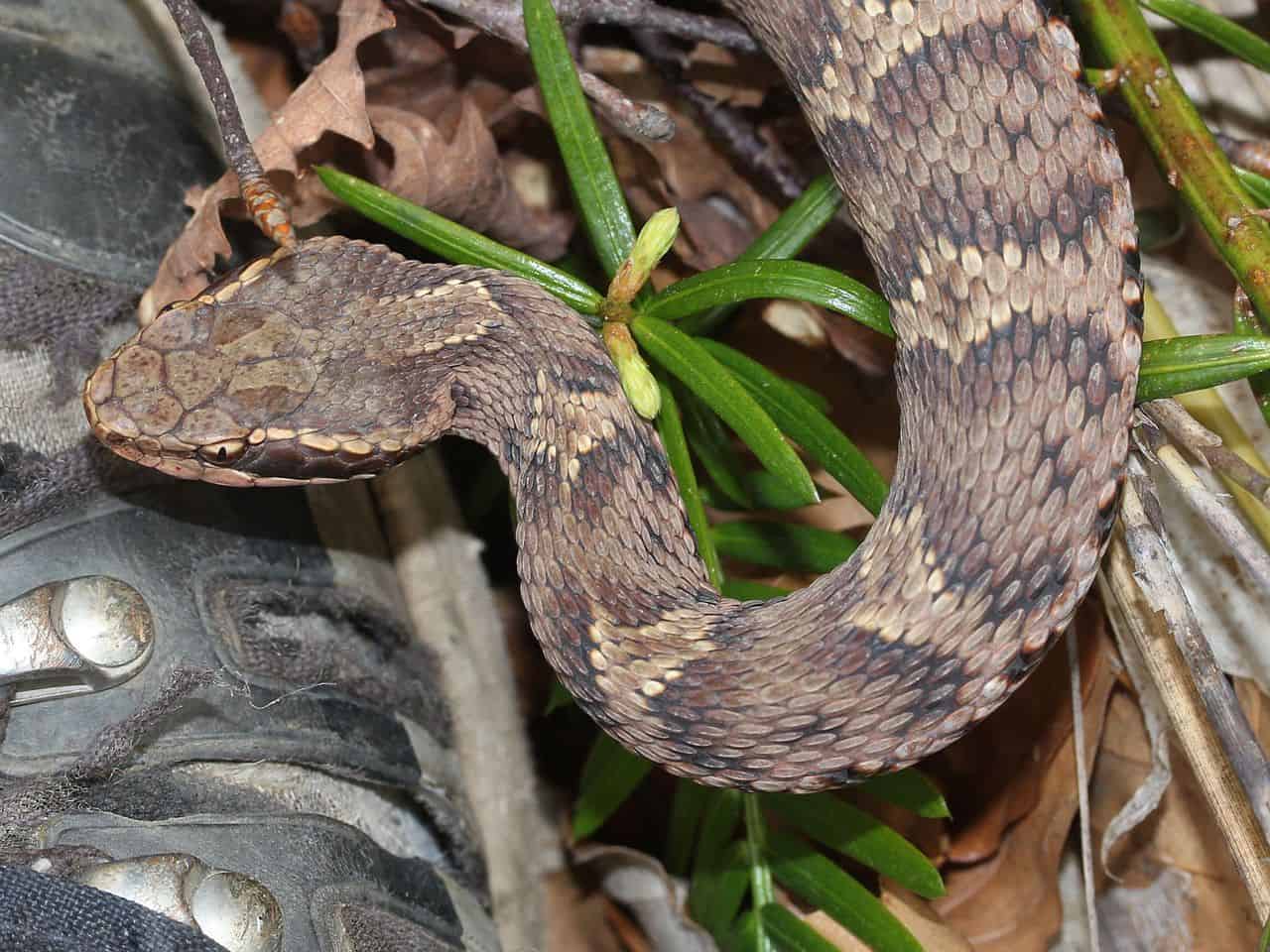
Japan and Great Britain are quite similar when it comes to snakes. They’re both island nations, they both have temperate climates, and they both have a handful of cold-adapted snake species. That said, the deadliest snake in Japan is far worse than England’s, and that snake is the mamushi, or Japanese pitviper (Gloydius blomhoffi).
The feared mamushi kills an estimated 10 Japanese people every year, and bites approximately 3000. It’s only a small snake, at 48-80cm, but its venom possesses an LD50 toxicity score of 0.3-1.22mg. This falls short of the inland taipan at 0.025mg, the world’s most venomous snake, but easily beats the cottonmouth (2.04mg) or copperhead (10.9mg) of the US.
Mamushi venom is theoretically weaker than the British adder, with its LD50 score of 0.11mg, yet the facts speak themselves, as the adder has only killed one British person since 1970. The mamushi also has a lower venom yield of 1-8mg, compared to the adder’s 6-18mg, yet still inflicts far more death annually.
The mamushi bites its victims in very specific locations, favouring the toes and fingers, often of villagers sifting through long grasses to forage for mushrooms. This is mainly a woodland snake, and across Japan, there are many wooden signs warning of their presence within.
| 2 | Lurks in leafy woodlands |
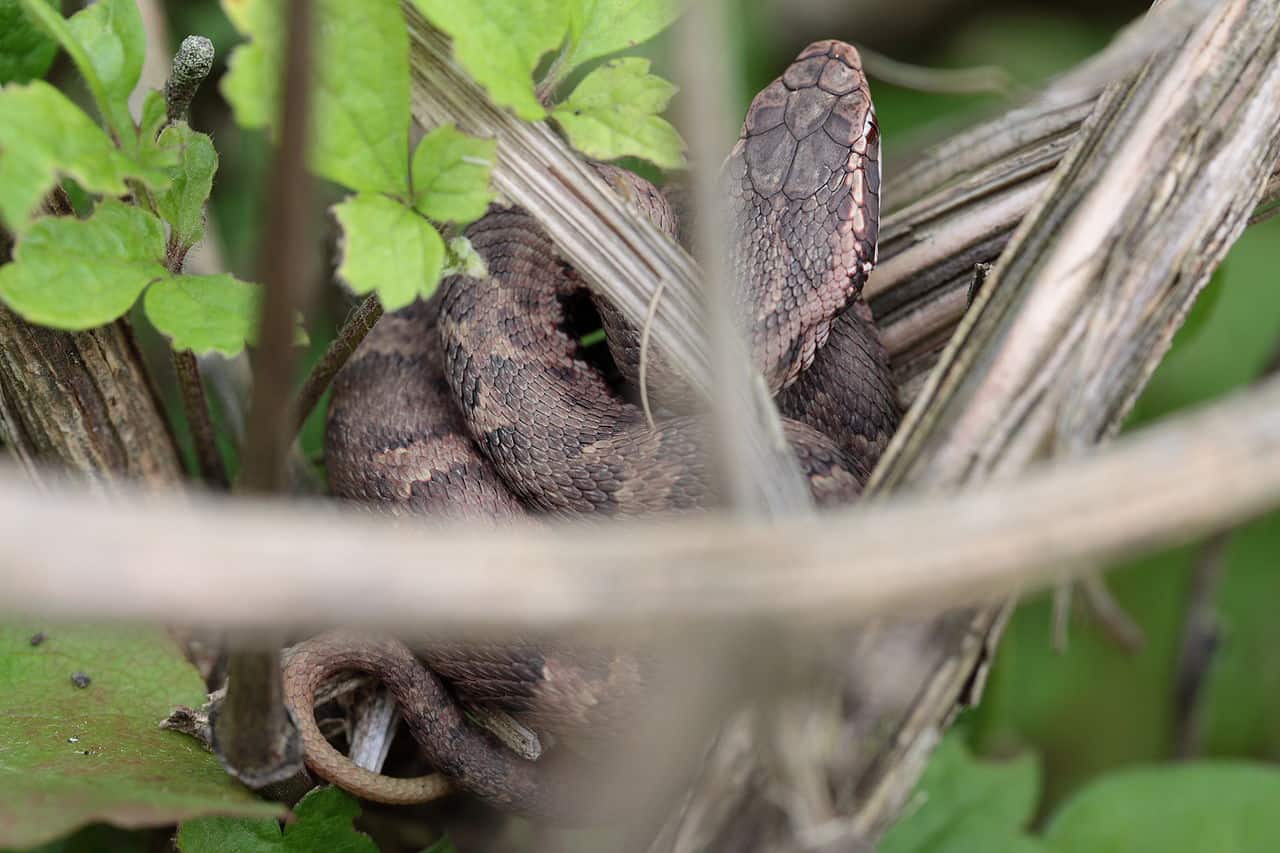
The mamushi’s disproportionate deadliness is down to its rich soup of toxins. Many are unique, including mamushi salivary kallikrein, which attacks bradykinin and massively reduces blood pressure. Two powerful haemorrhagic toxins are HR-1 and HR-2, with HR-1 being ten times stronger. These snakey substances cause severe intestinal haemorrhaging, with a milder serving of muscle haemorrhaging, in both mice and humans.
Mamushi also spew out neurotoxins in the class of beta-toxins, which act pre-synaptically and are therefore harder to treat with the usual anticholinesterase remedies. These manifest in victims as drooling, muscle weakness, and even fainting. Others are haemolytic toxins which cause red blood cells to burst, and lead to kidney failure, the main cause of mamushi bite death.
Hyaluronidase is more of a practical ingredient: it degrades the proteins surrounding the bite mark, allowing other toxins faster entry. Mamushi l-amino acid oxidase is particularly nasty, encouraging the destruction of lung cells. It’s also the main anticoagulant in mamushi venom, causing blood to thin and gush from the bite mark. The most shocking effect is that the surrounding tissues sometimes liquify.
| 3 | Barely detectable fang marks |
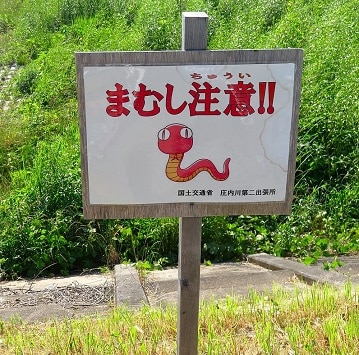
It’s hard not to notice when a boa constrictor is coiled around your neck, but the mamushi is particularly stealthy for a killer snake. In 2016, a 38 year old man arrived at the hospital complaining that he couldn’t move his arm, which was covered in fleshless patches where the skin had completely melted. 8 hours after arriving, the situation worsened; his arm started to swell like a balloon.
The man soon developed a squint and double vision, and the plot thickened when medical scans revealed minor liver damage and internal inflammation. The doctors cleansed the suspected bite zone and placed him on a high dose of antibiotics, but two days later, his lungs became flooded with fluid. The man was finally discharged after 32 days, and took 3 months to fully recover.
While never proven, scientists speculated in the BMJ Journal that his ailment was a secret, undetected mamushi bite. A mamushi’s fangs are only 5mm, causing many people to dismiss the bites as splinters or cuts and scrapes. Many mamushi victims never realise they’ve been bitten.
| 4 | Abundant all over Japan |
Mamushis occupy the whole of Japan, with the sole exception of the island chain of Ryukyu. They’re found in the temperate fields of Tokyo and frosty northern island of Hokkaido alike. Further afield, you can find mamushis slithering around eastern China and the Korean peninsula, and the wiser doctors always keep specialised antivenom against them.
The longest ever mamushi measured just 91cm. Their preferred habitats add to the stealth factor, as this snake is fond of grasslands, forest clearings, and muddy fields, because of the high number of rodents found in them. A significant percentage of bites happen in those fields every year. The mamushi doesn’t shy away from civilisation either, as US army bases in Japan are constantly seeing serpent infiltrators.
It’s rare for a mamushi to kill within 24 hours, but most bite fatalities happen within 5 days, with a more resistant subgroup perishing within 20 days.
| 5 | Guardian of Odani castle |
Japan has an endless stream of superstitions surrounding wildlife, from marauding bears of doom to serpent gods of mountains that wreak vengeance on anyone who dares to challenge them. One snake related legend involves Odani Castle, a ruin which lies in the modern day province of Shiga. It’s stated that the warriors defending this castle centuries ago died in their dozens, and were reincarnated as watchful mamushi, who continue to guard the castle to this day.
Other villages believe that harming a mamushi will cause all the nearby mamushi to arrive at once and kill the attacker. Killing mamushis on mountain slopes is said to be particularly unwise. There’s also rumours concerning folk medicine, as a mamushi’s skin is said to deal with verruca warts effectively.
One specific legend is called “The Dragon God of Suttsu”. It originates from Sutto, Hokkaido, and states that any mamushi which appears next to a fishing boat is an embodiment of Kami the dragon god. Killing this mamushi is believed to invite curses, and is therefore taboo among the local fishermen.
| 6 | Mamushi mountain shrines |
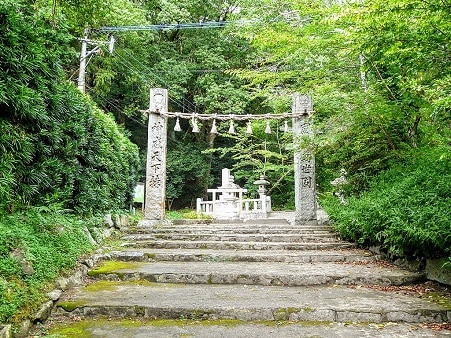
One area where this snake worship lives on is Mt Futagoyama, a 635 metre peak in Iwata province on Honshu. Halfway up the mountain’s slopes lies a shrine dedicated to the mamushi, just next to a mineral spring. Until recently, the shrine was guarded by an elder woman, who told a researcher in the late 1990s that the shrine was home to the local kami, the Japanese word for deity, which embodied itself as a mamushi. Mamushi were supposedly particularly abundant around the shrine, but unusually, they never coiled up and bit people unless they were severely provoked. The local snakes even slept in beds at night like humans.
In the northerly island of Hokkaido lies a ghost hamlet called Samukawa. In 1957, this traditional settlement was abandoned forever after severe typhoon damage. Its deserted buildings stand empty, but in its day, the local mamushi were believed to control the success of all fishing expeditions. The locals carried flags emblazoned with the mamushi whenever they went to war.
It’s said that because of these ancient beliefs, many Japanese villagers are strangely reluctant to kill mamushi, without fully understanding why.
| 7 | Diet: a more flexible viper |
The mamushi lives by the carnivore, and dies by the carnivore. On one hand, the mamushi will eat anything that its stretchy belly can accommodate. Their exact preferences are unknown, but scientists have spotted an inclination towards frogs and rodents. They’re also known to eat birds, centipedes, lizards and even other snakes. Unlike the American corn snake, they’re not popular in captivity, so there’s little diet data flowing in from keepers.
On the other hand, this venomous snake often ends up on the dinnerplates of large predators itself. A mamushi’s worst nightmare is a sudden shadow overhead in the form of a raptor, crow or raven. An even bigger fear is the adorable-looking Japanese weasel, an orange-furred creature of the snow, which has been spotted hunting mamushis several times.
One of Japan’s other commons species is the Japanese four-lined snake. This species measures 100 to 150cm, and has been witnessed gobbling up the smaller mamushi in the past, toxic venom be damned.
| 8 | Sticks to a home territory |
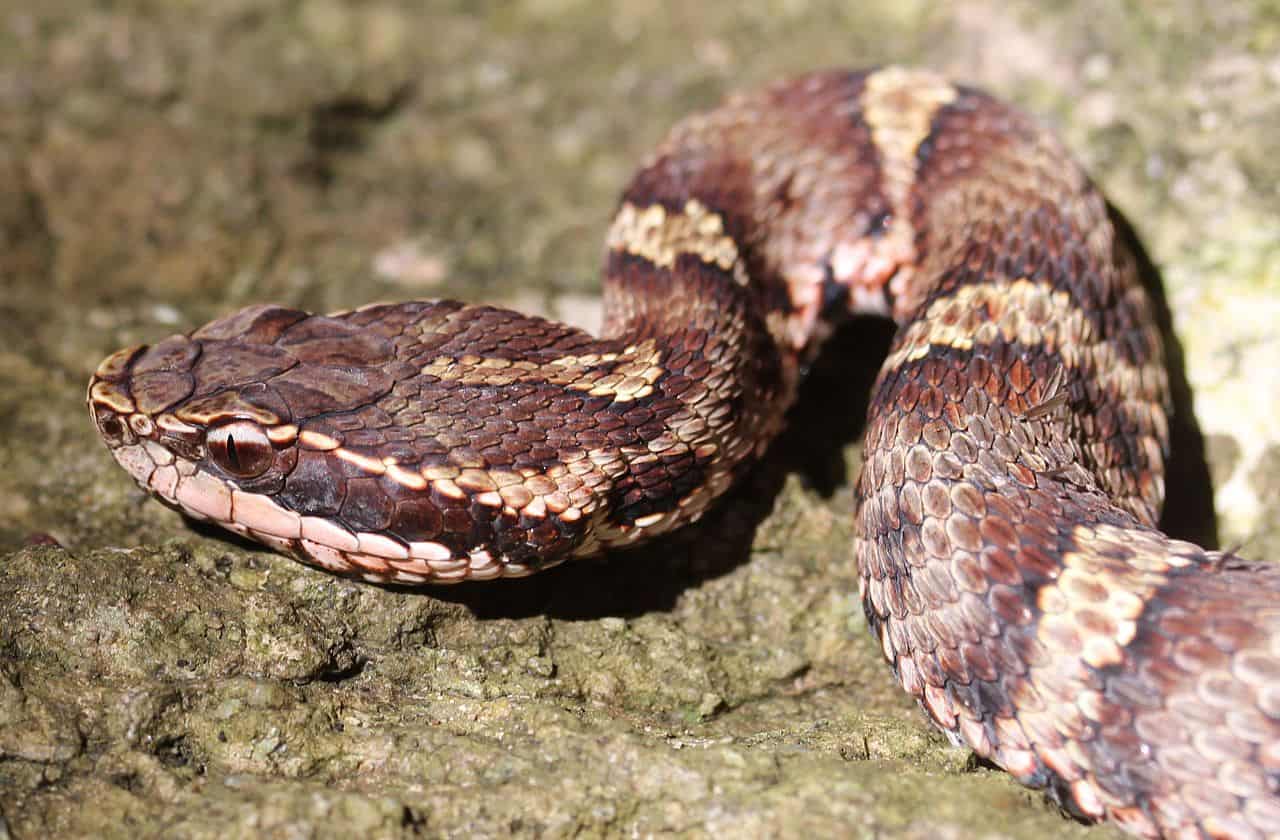
Mamushis are a nocturnal snake, with vertical (elliptical) pupils, but also special heat pits in their heads that grant them infrared vision in darkness. This allows the mamushi to detect prey whose body temperature differs from its surroundings by only one degree.
The mamushi is ovoviviparous, giving birth to live young rather than laying eggs. Mother mamushis have the awesome ability of storing sperm for 3 years after “donation” and deploying it whenever they feel like to get pregnant. Their average baby count is 2-9, and in the days before giving birth, mamushi mothers will restrict their territory severely, ultimately to just a few metres.
Mamushis aren’t adventurous at the best of times, as it was found in Hokkaido that they stick to similar areas year after year. Following birth, newborn mamushi are instantly independent, and survive by eating tiny insects.
Originally, the mamushi was assigned to the Agkistrodon family of cottonmouths and copperheads, but these days it’s part of the closely related Gloydius family.
| 9 | Now a gourmet flavour of ice cream |
Gone are the days when finding an ice cream parlour that served mango and watermelon was a thrill to be savoured. The new craze is in, and it’s officially snake-flavoured ice cream. In Japan, the country of never-ending imagination, you can now purchase an ice cream which lists mamushi as one of its three main flavourings, alongside garlic and almonds.
There’s no attempt at disguising the reptilian origins, as the tub features a drab and unstylish image of a mamushi slithering around the undergrowth. A blogger who tried the recipe seemed more confused than anything: “My taste buds were fully aware of three parts—garlic, a bit of almond, but the third standout, well, I’ve never had viper before in any form (solid and liquid included) so that must’ve been it.”
Most worryingly, this is one instance where they’re giving you your money’s worth; mamushi is listed before almonds and garlic in the ingredients, indicating that it probably makes up a higher percentage.
If snake-flavoured ice cream is merely child’s play to you, then never fear: the same establishment (Ice Cream City in Namja Town) also offers raw horse flesh ice cream and a cow tongue version.
| 10 | Warning signs are everywhere |
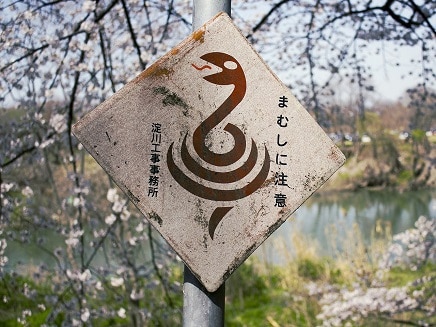
Silent though the mamushi may be, it’s common to find signs in the Japanese countryside offering warnings that they might be nearby. They’re often planted among heavy leaf litter, and many are stylish in the traditional Japanese mould, with silhouetted snakes whose tails coil downwards like a series of runes.
But many internet readers find the cartoon snakes cute rather than terrifying. Their eyes often look friendly rather than predatory, as though they’re one cuddle away from becoming a faithful household pet. Some of them look like bumbling idiots. There’s no consistency across the signs, as each seems to have been crafted locally, giving each one cool new designs. Other signs warn of the Habu, another dangerous snake in Japan.
If you do stumble across a mamushi, then they usually remain motionless and silent, watching the potential predator closely (procrypsis). Sometimes, the camouflage is too effective for their own good: it’s so effective in leaf litter that people don’t notice them, and don’t realise the subtle warning signs being issued.

Pingback: 66 Names That Mean Poison / Toxic - Creative Nomenclature